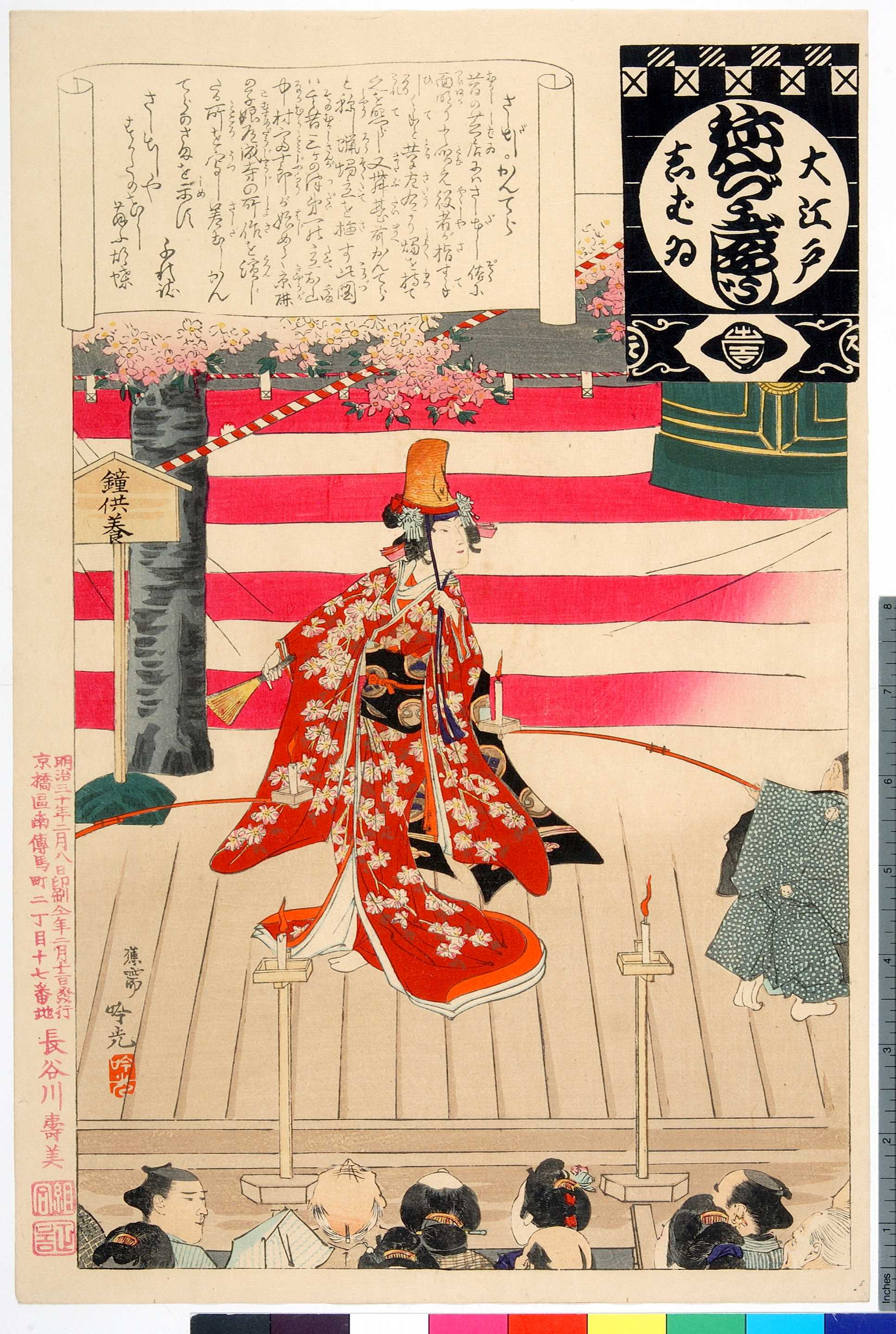B04 Shosagoto and Music, Stage Lighting
-
Ō-Edo shibai nenjyū gyōji "Sashidashi, Kantera"
Ōban, Colour print
Artist: Adachi Ginkō; Published: Meiji 30 (1897) by Hasegawa Sumi
Ritsumeikan Art Research Center (arcUP2062)How was stage lighting devised before the advent of electic light? With a roof over the stage, we can imagine that the theatre interior was generally rather dark. For that reason, candlesticks known as kantera were placed at the front of the stage and the stage was lit by candle, as can be seen in this print. For special-purpose lighting, a candlestick with an extended grip was used to bring light near actors' faces. We can see the technique in this print. Since the play depicted is the famous classic dance play Musume dōjōji, an actor in formal attire performs this special technique, though in less important cases, it would typically be managed by a stage assistant (kurogo).
This scene from Kyōganoko Musume Dōjōji shows the actor Nakamura Tomijūrō I (1719-1786) at the peak of his career in the 1750s and 60s performing the role of the shirabyōshi dancing girl Hanako. Needlesss to say, the depiction doesn't reflect the stage at the time of the performance, but conveys instead the atmosphere of the late-Edo stage.
[Glossary]
Tsuraakari, Kantera, Tateoyama, Tachioyama,Kyoganoko Musume dojo-ji[Related Topics]
Performance and Stage Effect, Acoustics and Music -

- 投稿日:
- by 8P
- カテゴリ: B Front and Back of Kabuki Stage
- [編集]